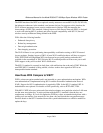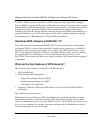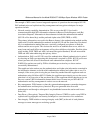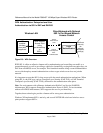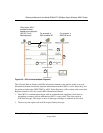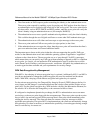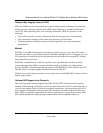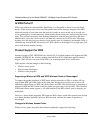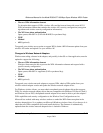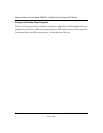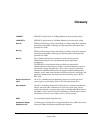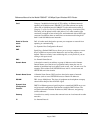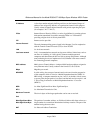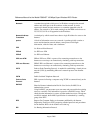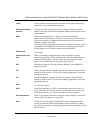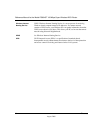
Glossary -1
August 2004
Glossary
10BASE-T
IEEE 802.3 specification for 10 Mbps Ethernet over twisted pair wiring.
100BASE-Tx
IEEE 802.3 specification for 100 Mbps Ethernet over twisted pair wiring.
802.11b
IEEE specification for wireless networking at 11 Mbps using direct-sequence
spread-spectrum (DSSS) technology and operating in the unlicensed radio
spectrum at 2.5GHz.
802.11g
IEEE specification for wireless networking at 54 Mbps using direct-sequence
spread-spectrum (DSSS) technology and operating in the unlicensed radio
spectrum at 2.5GHz.
802.11x
802.1x defines port-based, network access control used to provide
authenticated network access and automated data encryption key
management.
The IEEE 802.1x draft standard offers an effective framework for
authenticating and controlling user traffic to a protected network, as well as
dynamically varying encryption keys. 802.1x uses a protocol called EAP
(Extensible Authentication Protocol) and supports multiple authentication
methods, such as token cards, Kerberos, one-time passwords, certificates, and
public key authentication. For details on EAP specifically, refer to IETF's
RFC 2284.
Access Control List
(ACL)
An ACL is a database that an Operating System uses to track each user’s
access rights to system objects (such as file directories and/or files).
Ad-hoc Mode
An 802.11 networking framework in which devices or stations communicate
directly with each other, without the use of an access point (AP). Ad-hoc
mode is also referred to as peer-to-peer mode or an Independent Basic Service
Set (IBSS). Ad-hoc mode is useful for establishing a network where wireless
infrastructure does not exist or where services are not required.
ADSL
See Asymmetric Digital Subscriber Line
Asymmetric Digital
Subscriber Line
A technology for sending data over regular telephone lines. ADSL allows data
rates up to 8 Mbps downstream and 640 Kbps upstream.



